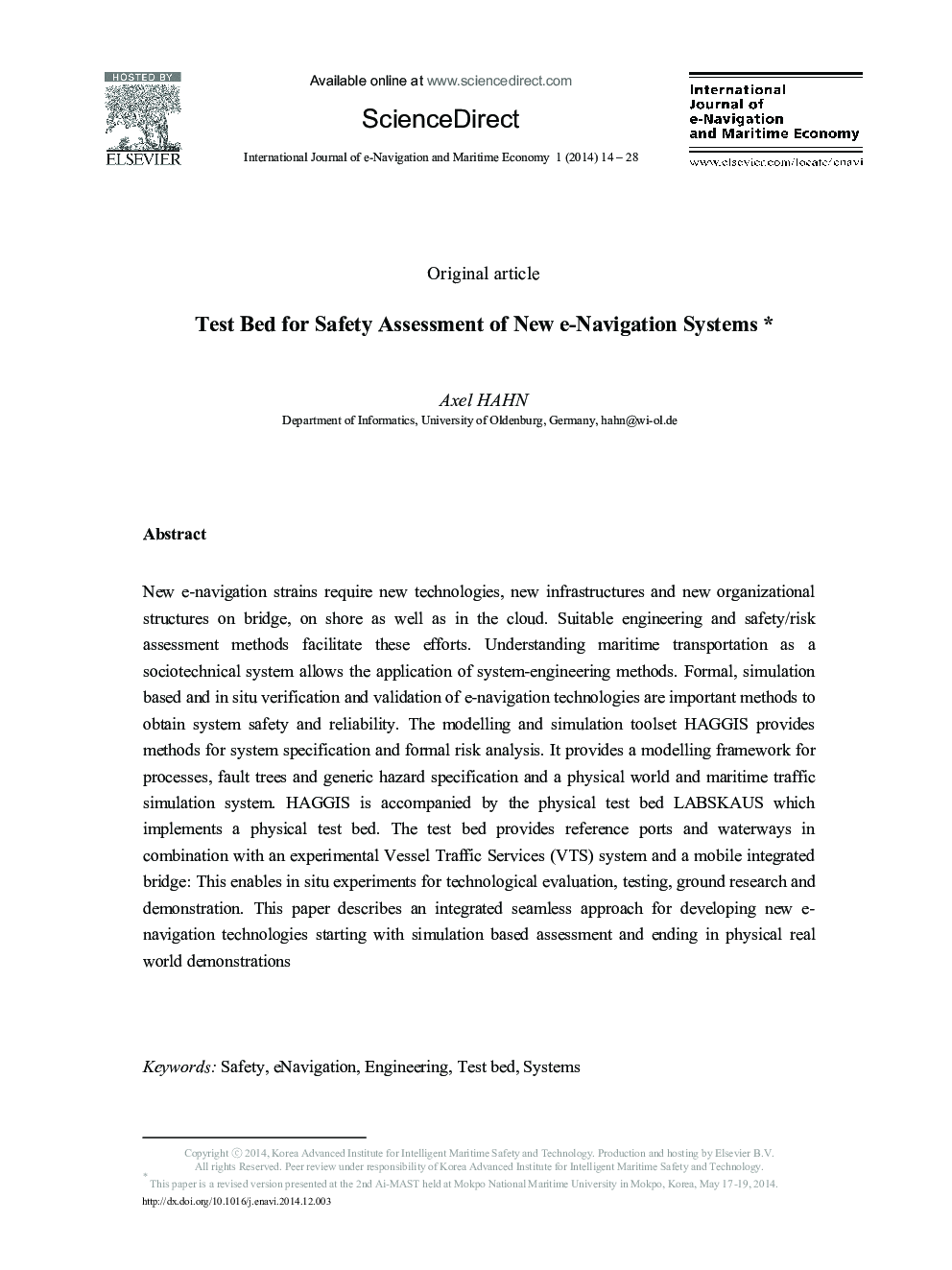| کد مقاله | کد نشریه | سال انتشار | مقاله انگلیسی | نسخه تمام متن |
|---|---|---|---|---|
| 724837 | 1461173 | 2014 | 15 صفحه PDF | دانلود رایگان |
New e-navigation strains require new technologies, new infrastructures and new organizational structures on bridge, on shore as well as in the cloud. Suitable engineering and safety/risk assessment methods facilitate these efforts. Understanding maritime transportation as a sociotechnical system allows the application of system-engineering methods. Formal, simulation based and in situ verification and validation of e-navigation technologies are important methods to obtain system safety and reliability. The modelling and simulation toolset HAGGIS provides methods for system specification and formal risk analysis. It provides a modelling framework for processes, fault trees and generic hazard specification and a physical world and maritime traffic simulation system. HAGGIS is accompanied by the physical test bed LABSKAUS which implements a physical test bed. The test bed provides reference ports and waterways in combination with an experimental Vessel Traffic Services (VTS) system and a mobile integrated bridge: This enables in situ experiments for technological evaluation, testing, ground research and demonstration. This paper describes an integrated seamless approach for developing new e-navigation technologies starting with simulation based assessment and ending in physical real world demonstrations
Journal: International Journal of e-Navigation and Maritime Economy - Volume 1, December 2014, Pages 14–28
